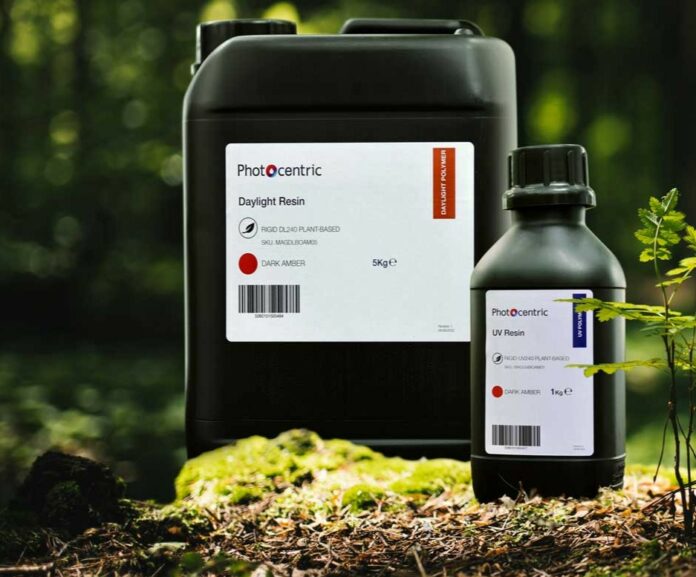Oil-derived resins have often been the number one choice of 3D printing resins’ users. However, with the current fight against climate change, manufacturers are exploring if bio-based resins can deliver the same or better performance than their traditional counterparts.
In this vein, 3D printer manufacturer Photocentric studied several bio-based raw materials, both from plants and bio-waste streams. Dr Rob Young, Head of Chemistry at Photocentric, commented ‘the question we were answering was why couldn’t you get better properties that exceeded those from oil (effectively just a soup of animals and plants brewed over a few million years) if you selected a specific polyol from a plant with exceptional properties’.
Furthermore, plants have evolved over generations to hold as much water as possible in a variety of conditions, making them an ideal source of material that inhibits water uptake. This means that if their structure is tough enough to be used in concrete and as a construction aggregate, they are certainly tough enough to make 3D printed plastic parts.
Moreover, bio-derived resins provide the advantage that they benefit the environment. As far as manufacturing is concerned, Photocentric explains that SLA offers an attractively low carbon footprint. On another note, exposure via an LCD screen is the least energy intensive method of the three main resin printing techniques. Prototyping doesn’t create a lot of product and therefore the CO2 generated hasn’t been a great concern, but now as 3D printing moves towards mass manufacturing the need to calculate and reduce the total carbon content in the plastic chain has become more pressing.
A closer look at single plant sources reveal a number of interesting advantages for 3D printing. Dr Rob Young commented ‘We have used monomers made from tree waste, camphene. It’s the most widely encountered terpenoid in nature, appearing in conifers and other trees as well as in fast growing plants such as cannabis and cypress. It can also before formed from alpha-pinene, further increasing its feedstock capability. Their chemical structure lends themselves to relatively trivial chemical processes to form monomers that have amazing diluting powers with high bio-content.’
This research led the UK-based company to develop a grade Rigid DL240 plant-based resin, composed of an oligomer made from corn waste polyol. Part of the journey to being sustainable is to calculate the carbon embedded in the process, Photocentric are now testing to ASTM D6866-21 for carbon14 radioactivity and will be providing these numbers as standard disclosures on their technical data sheets.
Remember, you can post job opportunities in the AM Industry on 3D ADEPT Media free of charge or look for a job via our job board. Make sure to follow us on our social networks and subscribe to our weekly newsletter : Facebook, Twitter, LinkedIn & Instagram ! If you want to be featured in the next issue of our digital magazine or if you hear a story that needs to be heard, make sure you send it to contact@3dadept.com






